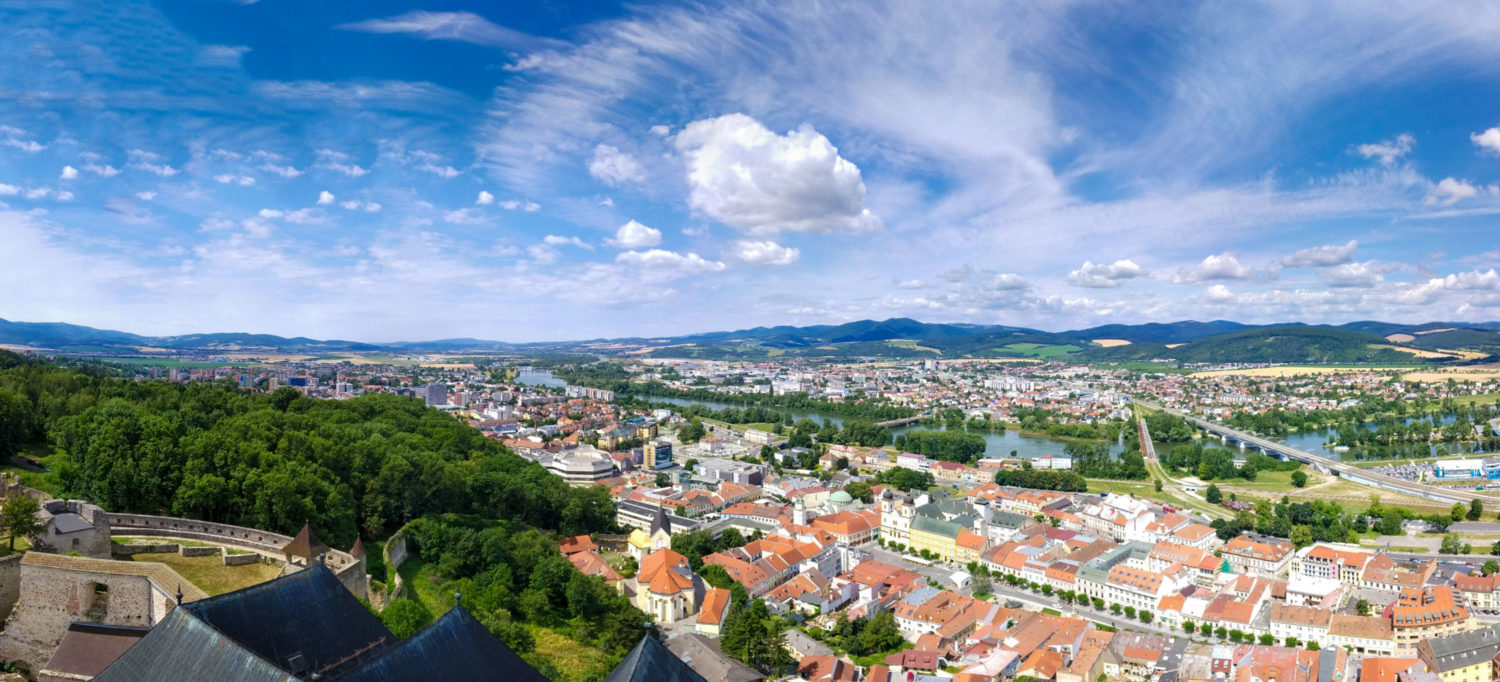The places you are walking around were inhabited for about 3,800 years, from the Early Bronze Age up to the Middle Ages. It was here, in the area of today’s Cherry Orchard and on the neighbouring castle hill, where the settlement was situated, which later became a hillfort protected from invaders by a massive fortification. The finds found here were not only from prehistoric times (from the Maďarovce culture, Lusatian culture and Púchov culture) but also from the Roman period and the early Middle Ages.
The archaeological site of the Cherry Orchard is a national cultural monument that deserves special attention and protection due to its value.
Mysterious ramparts in the Cherry Orchard
Remnants of the ramparts in the form of elevated earth embankments can still be seen around the entire orchard. The largest and steepest rampart can be found on the west side of the orchard. When you follow the path heading towards the castle, you will be walking over its top. The ramparts protected the entire top of the hill and the settlement hidden behind. The earliest evidence of the construction of this fortification dates back to the Early Bronze Age.
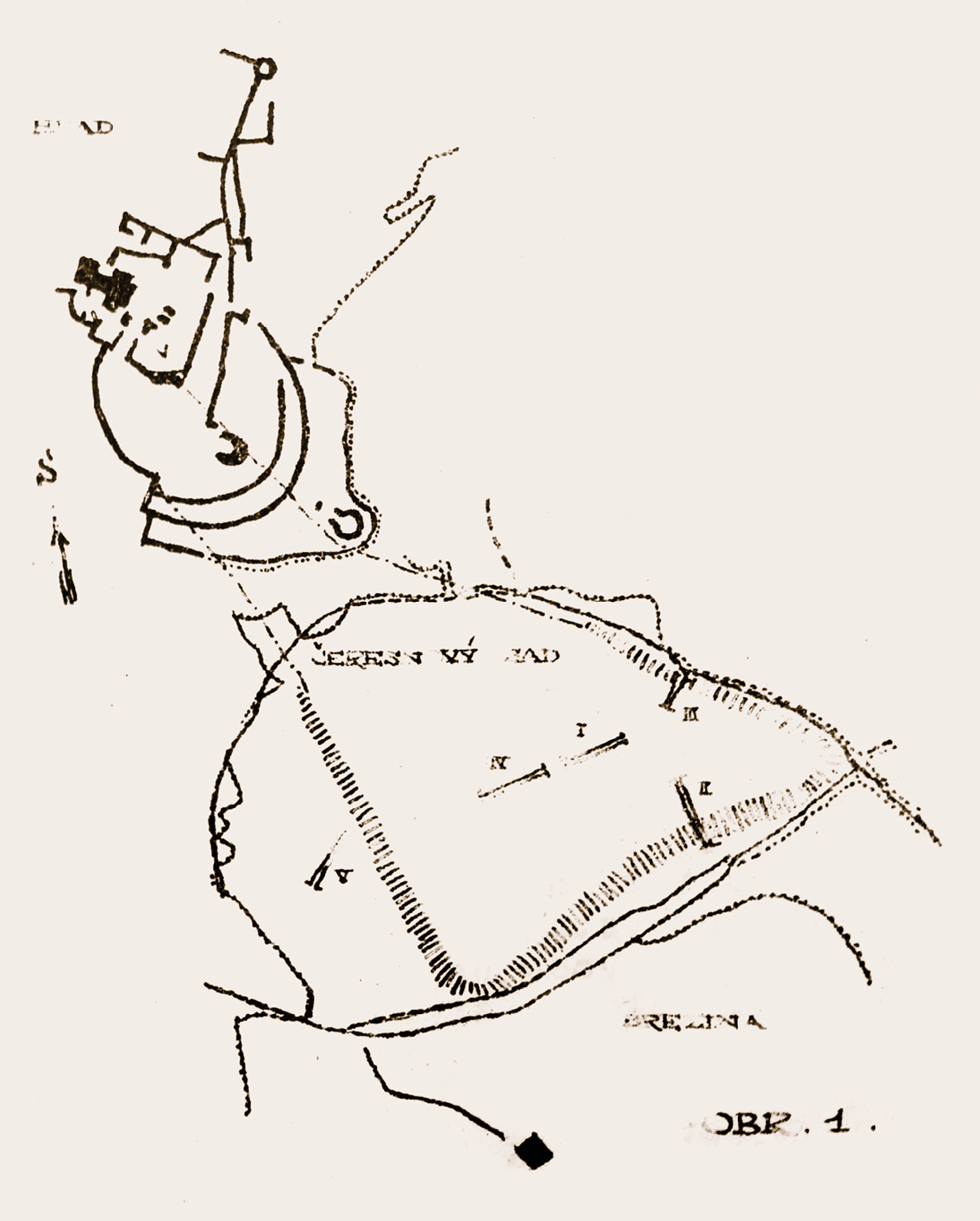
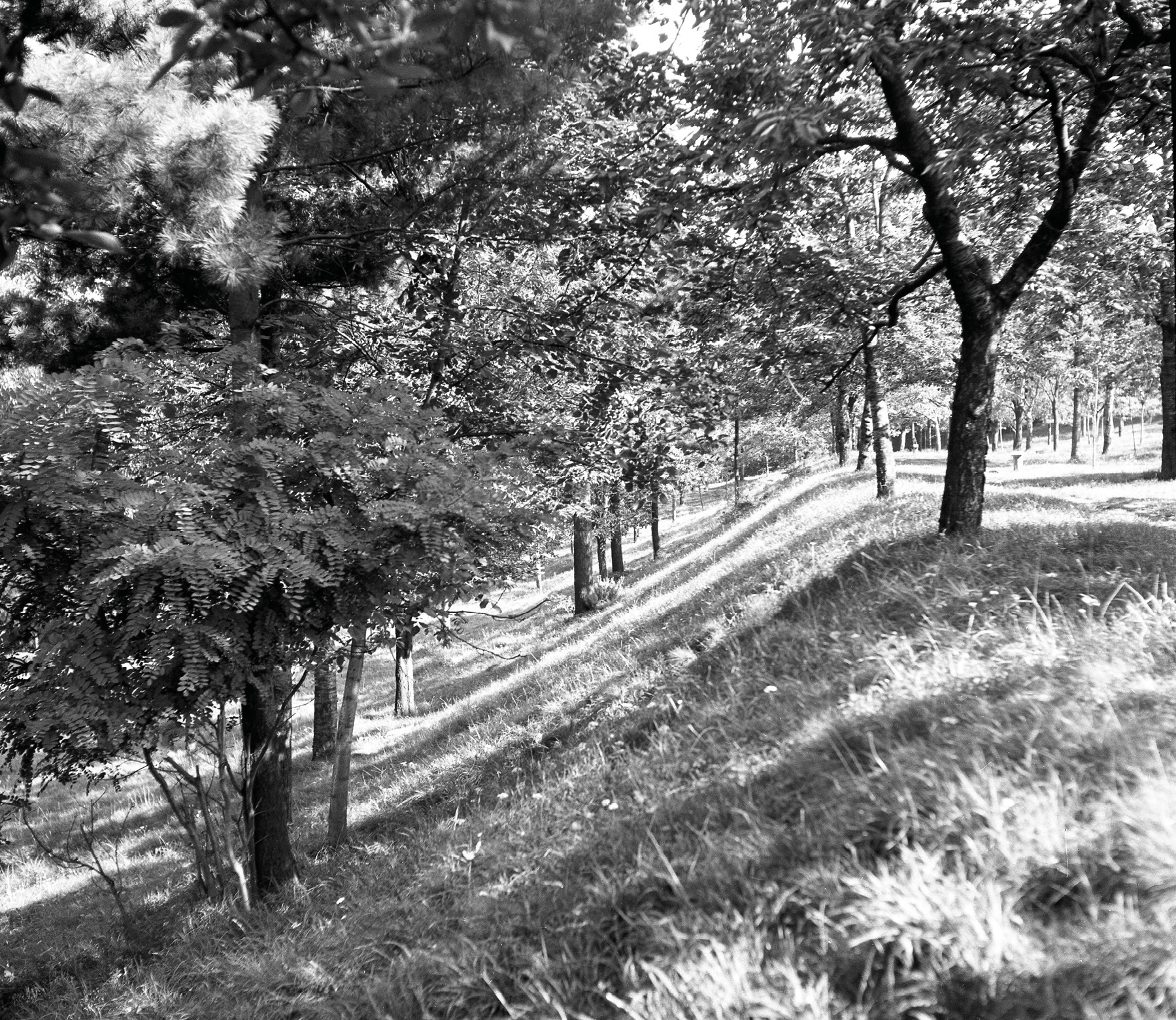
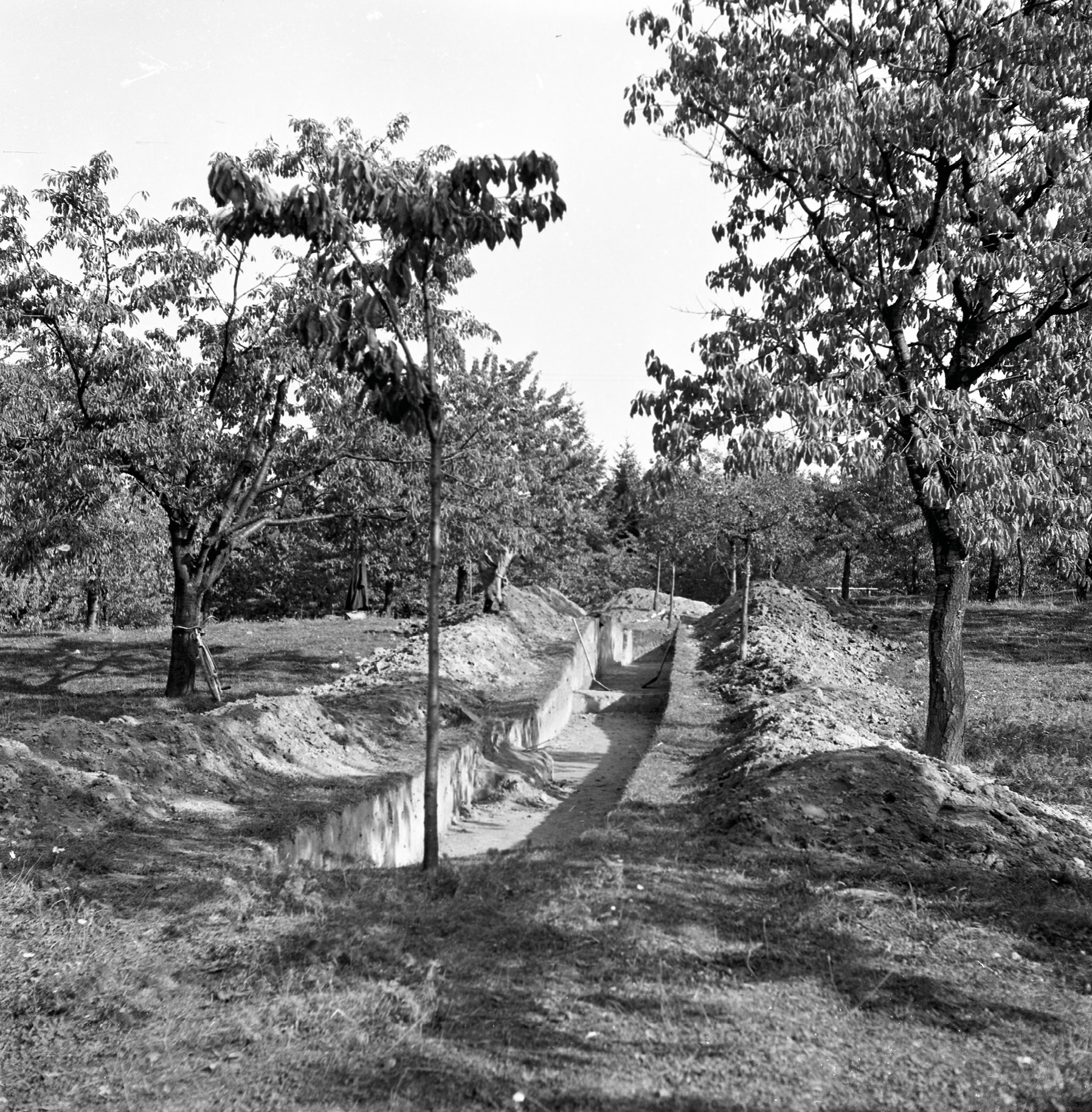
Graves tell the story of life in Brezina
We can’t reconstruct a normal daily routine of prehistoric people in detail. Only the solid objects that had been used, such as the fragments of vessels, tools or ornaments, managed to survive thousands of years underground. A rare curiosity is an interesting find of about thirty snail shells discovered here, in the area of today’s Cherry Orchard, underneath the remnants of something that probably served as a boiling pit, which also tells us something about part of our ancestors’ diet.
We often learn more about how they departed from this life. Five graves from the Early Bronze Age were found in the Cherry Orchard. Burial customs at that time were strictly observed: they buried their dead in a crouched position, women lying on their left and men on their right side.
The graves discovered in 1957 contained the remnants of two children. According to the position of the remnants, we know that a girl was buried in one of the graves. A bronze pin that was used to fasten clothing at that time was found near her head. In the second grave, a boy was buried, holding an alms bowl and with a small vessel by his feet.
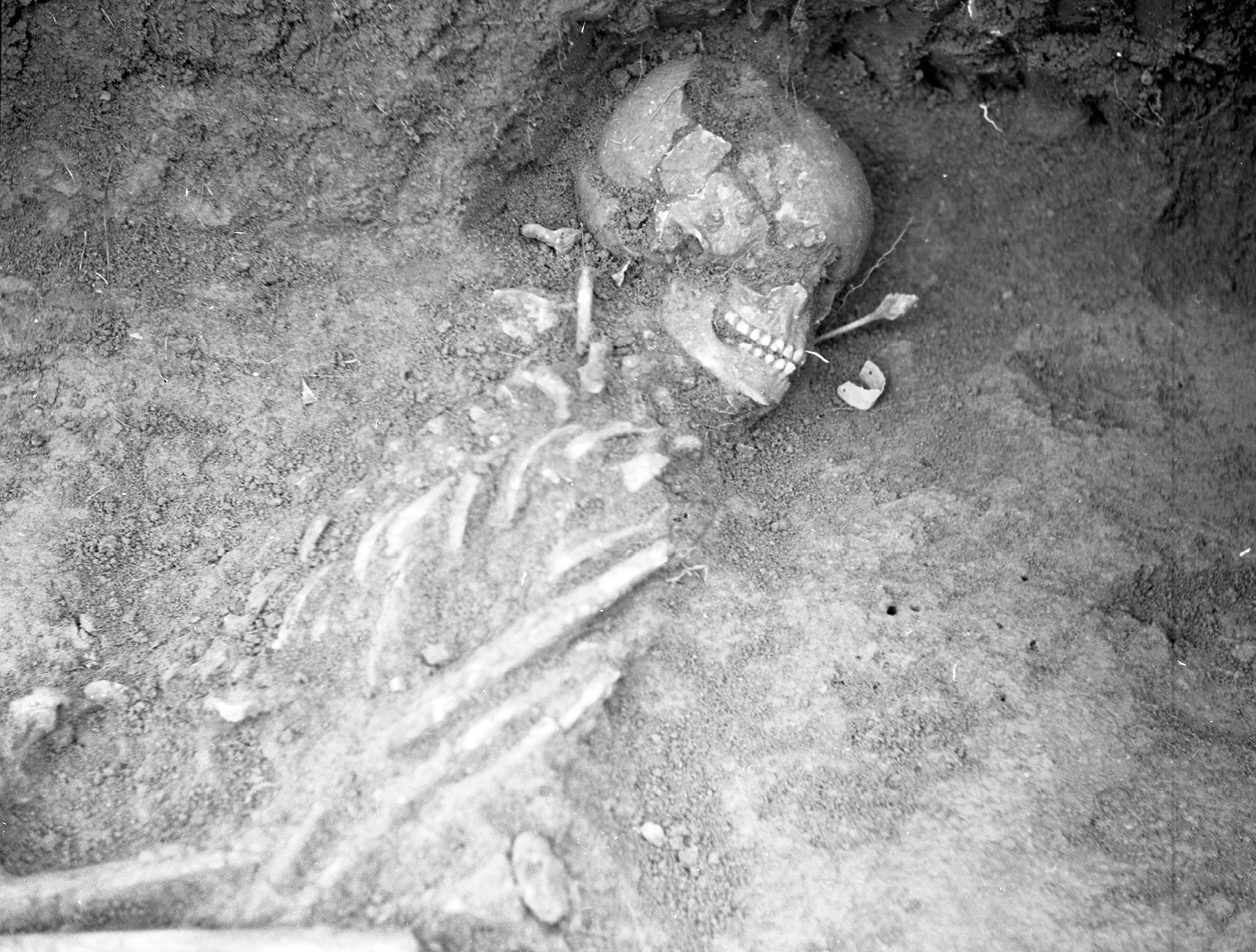
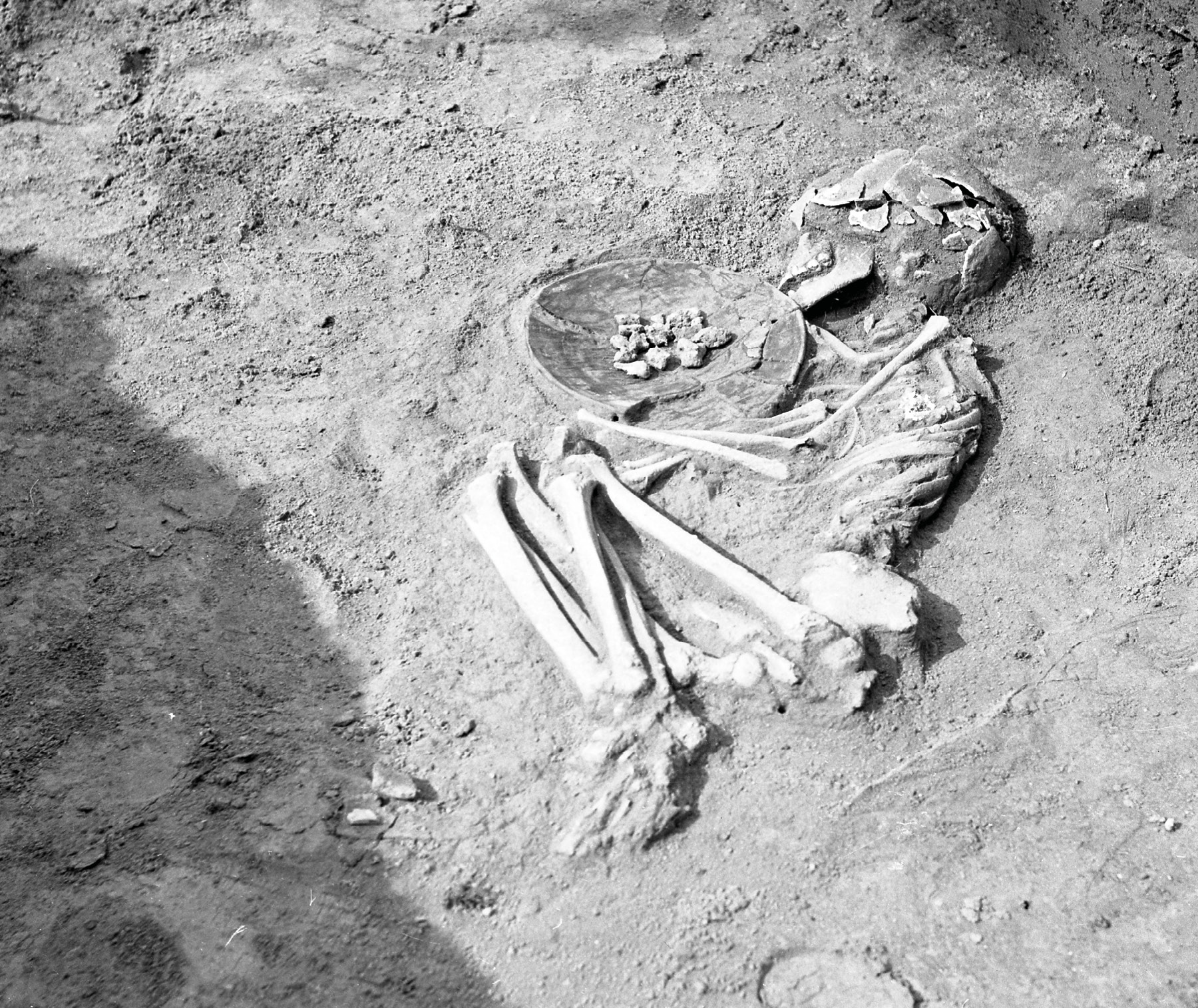
Resources:
- Štefan Pozdišovský: Zisťovací výskum v Čerešňovom sade v Trenčíne v r. 1957 (predbežná správa) [Survey in the Cherry Orchard in Trenčín in 1957 (preliminary report)].
- PhDr. Tamara Nešporová: Najstaršie osídlenie Trenčína [The earliest settlement of Trenčín], Vlastivedná monografia Trenčín.
- Museum of Trenčín
- Historická revue 4/2018 (journal)
Pictures: from the Museum of Trenčín collection.


